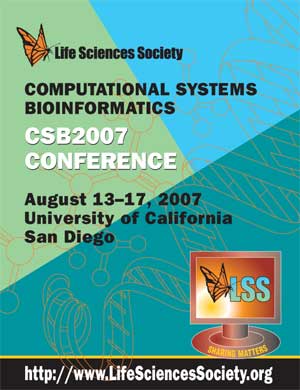Transcriptional Profiling of Definitive Endoderm Derived from Human Embryonic Stem Cells
Huiqing Liu, Stephen Dalton, Ying Xu*
Dept. of Biochemistry and Molecular Biology, and Institute of Bioinformatics, University of Georgia, Athens, GA 30602, USA. xyn@bmb.uga.edu
Proc LSS Comput Syst Bioinform Conf. August, 2007. Vol. 6, p. 79-82. Full-Text PDF
*To whom correspondence should be addressed.

Definitive endoderm (DE), the inner germ layer of the trilaminar embryo, forms gastrointestinal tract, its derivatives, thyroid, thymus, pancreas, lungs and liver. Studies on DE formation in Xenopus, zebrafish and mouse suggest a conserved molecular mechanism among vertebrates. However, relevant analysis on this activity in human has not been extensively carried out. With the maturity of the techniques for monitoring how human embryonic stem cells (hESCs) react to signals that determine their pluripotency, proliferation, survival, and differentiation status, we are now able to conduct a similar research in human. In this paper, we present an analysis of gene expression profiles obtained from two recent experiments to identify genes expressed differentially during the process of hESCs differentiation to DE. We have carried out a systematic study on these genes to understand the related transcriptional regulations and signaling pathways using computational predictions and comparative genome analyses. Our preliminary results draw a similar transcriptional profile of hESC-DE formation to that of other vertebrates.
[CSB2007 Conference Home Page]....[CSB2007 Online Proceedings]....[Life Sciences Society Home Page]